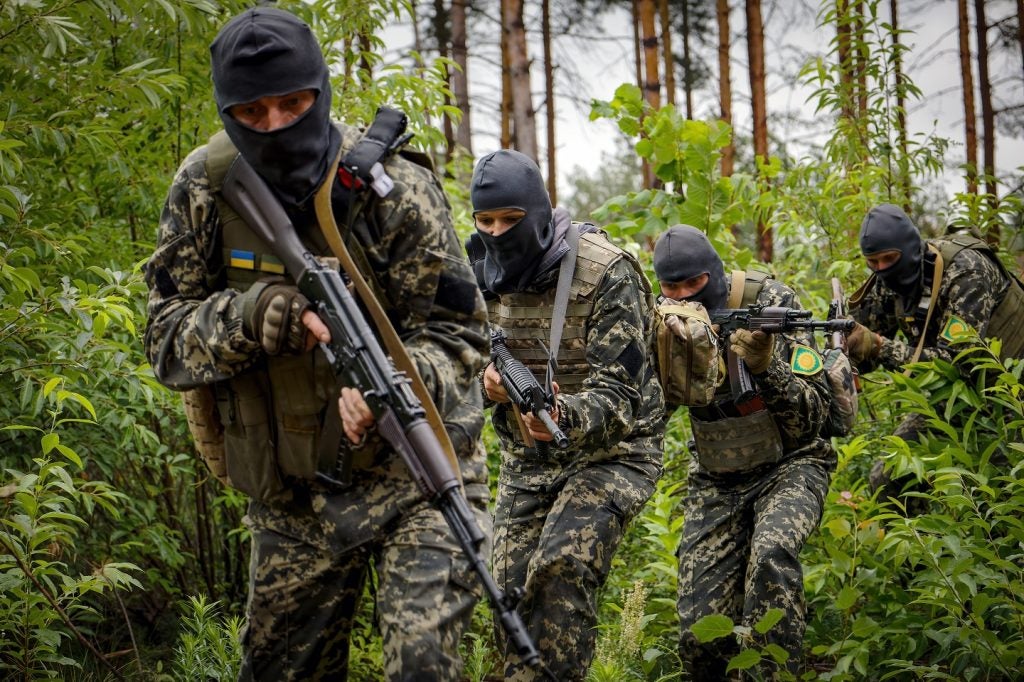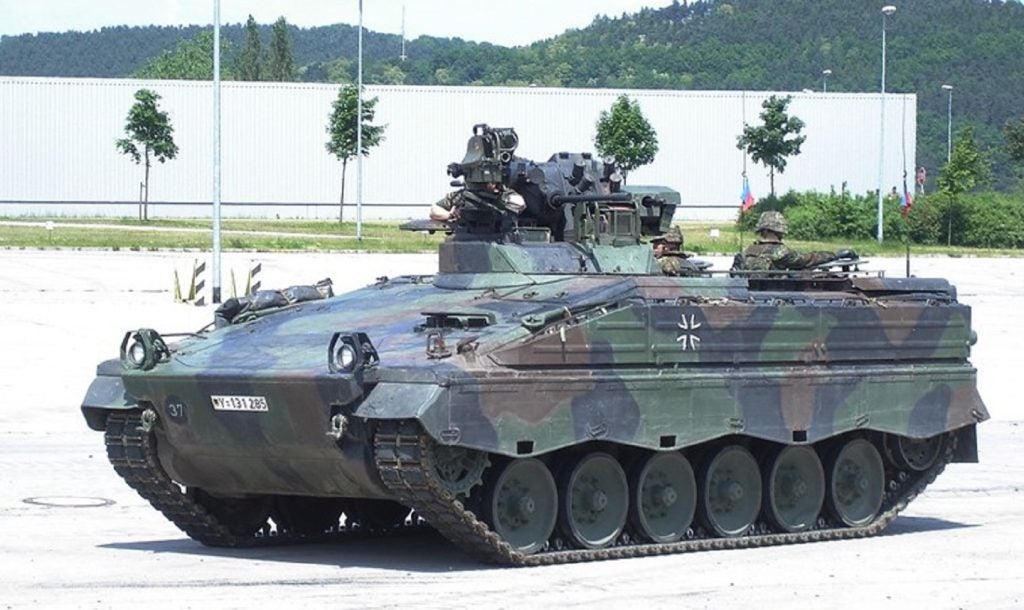
Army-technology.com ranks the top ten arms importing countries based on Stockholm International Peace Research Institute’s (SIPRI) estimates of the value of arms transferred in 2018.
Ranking the ten largest importers of arms
10. Pakistan
9. Qatar
8. United Arab Emirates (UAE)
7. South Korea
6. Algeria
How well do you really know your competitors?
Access the most comprehensive Company Profiles on the market, powered by GlobalData. Save hours of research. Gain competitive edge.

Thank you!
Your download email will arrive shortly
Not ready to buy yet? Download a free sample
We are confident about the unique quality of our Company Profiles. However, we want you to make the most beneficial decision for your business, so we offer a free sample that you can download by submitting the below form
By GlobalData5. Egypt
4. India
3. China
2. Australia
1. Saudi Arabia
10. Pakistan – $777m
Pakistan’s arms imports in 2018 mainly included aircraft, missiles, armoured vehicles, and naval vessels. China continues to be the major supplier of arms to Pakistan.
Arms exports from the US, which was once a major weapons exporter to Pakistan, declined during 2014-18, increasing Pakistan’s dependence on countries such as Turkey for arms supplies.
JF-17 Thunder fighter aircraft, Al-Khalid tanks, Azmat-class corvettes, C-802 anti-ship missiles, and MaxxPro armoured vehicles were some of the major arms imported by Pakistan during 2014-18.
9. Qatar – $816m
Qatar’s arms imports increased by more than 22% year-over-year in 2018 due to rearmament efforts and political tensions with neighbouring countries.
The US was responsible for 65% of Qatari arms imports during 2014-18, while the remaining imports came from countries such as Germany, France, China, and Russia.
Qatar also plans to import AH-64E Apache Guardian helicopters from the US, NH-90 TTH from France, and Fincantieri-3000 frigates from Italy over the next five years from 2019 to 2023.
8. United Arab Emirates (UAE) – $1.1bn
Regional tensions in the Middle East continue to propel the arms imports of the United Arab Emirates (UAE).
The majority of the UAE’s arms imports during 2014-18 were from the US and included products such as THAAD missile defence systems, Hellfire missiles, and MaxxPro armoured personnel carriers (APCs).
The UAE also imported C-295 aircraft, warships, Wing Loong-2 UAVs, CIRIT laser-guided missiles, and Erieye SRSS airborne early warning and control (AEW&C) systems in the last five years.
7. South Korea – $1.31bn
South Korea witnessed a more than 23% rise in its arms imports in 2018, compared to 2017. It relies on the US, Germany, and the UK for the majority of its arms supplies. South Korea’s defence procurement programmes are driven by the need for reinforcing its defence capabilities to face any potential aggressive actions of its neighbour North Korea.
AH-64E Apache attack helicopters, Type 214 submarines, MTU diesel engines, MT-30 gas turbines, and AIM-120 AMRAAM missiles were the major defence products imported by South Korea during 2014-2018.
South Korea, however, intends to reduce reliance on imports over the next five years through the development of its indigenous manufacturing capabilities.
6. Algeria – $1.32bn
Algerian arms imports in 2018 increased by 37%, compared to 2017. Russia accounted for 66% of the arms imports during 2014-18, followed by China (13%) and Germany (10%).
At 56%, Algeria’s arms imports were the highest in Africa during the period, surpassing other major weapons importers in the region such as Morocco and Nigeria.
Algeria imported Su-30MKA fighter aircraft, Mi-28N combat helicopters, MaxxPro armoured vehicles, AT-9 anti-tank missiles, and Kilo-class submarines during 2014-18.
5. Egypt – $1.48bn
Increased political tensions with neighbouring countries continued to drive Egypt’s arms imports in 2018. Despite a 38.2% decline in the value of imports compared to 2017, Egypt was the second biggest arms importer in the Middle East in 2018.
Egypt was the biggest recipients of French arms during 2014-18 and also one of the major importers of Russian weapons in the Middle East, during the period.
Gowind-2500 corvettes, Panthera T6 armoured vehicles, Rafale fighter aircraft, MICA missiles, and radars formed a major chunk of the weapon systems imported by Egypt.
4. India – $1.53bn
Indian arms imports declined by 47% in 2018 compared to the preceding year due to delays in supply of weapons manufactured under licence from foreign companies.
Nevertheless, Russia was the prime supplier of weapons imported by India, while Israel, the US, and France were also the major arms exporters during 2014-18.
Major imports by India during the period included Su-30MK fighter jets, T-90S tanks, Mi-8MT/Mi-17 helicopters, MILAN anti-tank missiles, and MTU engines.
3. China – $1.56bn
Despite being one of the world’s biggest arms exporters, China is also the third biggest arms importer in the world.
Russia accounted for the majority of Chinese arms imports in 2018, with the major imports being of missile defence systems, and engines for combat aircraft and warships.
China also imported MTU diesel engines from Germany and DT-59 gas-turbine engines from Ukraine during 2014-18.
2. Australia – $1.57bn
Australia’s weapon system imports in 2018 were mainly driven by major military procurement programmes such as Sea-4000 and Air-6000. The US, Spain, and France have been the major exporters of weapons to Australia during the last five years.
F-35 combat aircraft and P-8A Poseidon anti-submarine warfare (ASW) aircraft received from the US and warships from Spain accounted for more than 80% of Australia’s imports between 2014 and 2018.
Other arms imported by the country during the period included missiles, armoured vehicles, helicopters, and radar systems.
1. Saudi Arabia – $3.81bn
The US was the major supplier of weapon systems to Saudi Arabia in 2018, followed by the UK and France.
Saudi Arabia imported F-15 fighter aircraft from the US and Eurofighter Typhoon multi-role fighters from the UK between 2014 and 2018. The aircraft were transferred along with cruise missiles and other guided munitions.
Saudi Arabia is understood to be receiving F-15 combat aircraft, THAAD missile defence systems, and Black Hawk helicopters from the US, Piranha-V armoured vehicles from Canada, Avante 2200 corvettes from Spain, and An-132 transport aircraft from Ukraine in the next five years.







